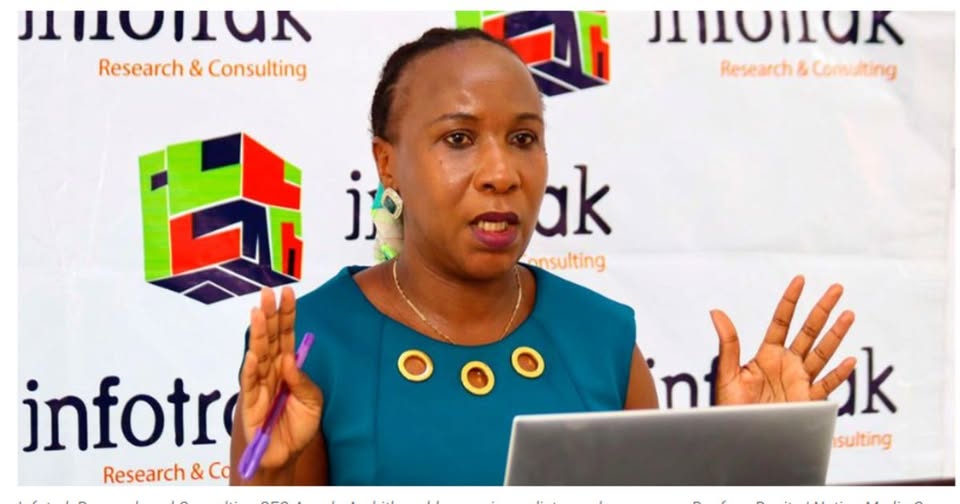By Roy Hezron
More boys than girls perform poorly in Kenya Certificate of Secondary Education (KCSE) examinations.
A report released by the Ministry of Education said more boys than girls scored “E” despite the significant decrease in the number of candidates attaining the mean grade from 2017 to 2019.
A total of 16,393 boys scored grade E last year compared to 12,944 girls, making a total of 29,337 students who scored the lowest grade last year.
The Basic Education Statistical Booklet 2019 report released by Education Cabinet Secretary Prof. George Magoha on 14th November 2020 said the number of candidates achieving C+ and above in 2019 increased by 38.26 per cent compared to 31.19 per cent in 2018.
A total of 125,840 candidates scored scored C+ and above last year which comprised of 53,809 girls and 72,031boys.
In 2018 only 91,018 candidates scored C+ and above, which included 37,342girls and 53,676boys.
“Generally, over the last three years, the number of candidates achieving a mean grade of C+ and above, the minimum entry into a university course, has been decreasing, more so in 2017 and 2018.
In 2018, 14 percent of the candidates scored C+ and above as similar trend continued.
For instance, only 16 percent and 12 percent of boys and girls, respectively, scored C+ and above in 2018,” reads a section of the report.
The report confirms that a total of 699,706 candidates registered for KCSE examination in the year 2019 increased from 664,480 and 615,591 candidates registered in 2018 and 2017, respectively.
Over the last three years, close to 90 percent of learners from public schools were boys, constituting 51percent of the total KCSE candidature.
The report reveals that there is low participation of the private sector in provision of Special Needs Education (SNE) due to the low number of candidates registered for KCSE examination by the private institutions.
The number of SNE candidates in KCSE increased steadily from 2017 to 2019. For instance in 2018 1,488 candidates registered while last year 1,660 candidates with special needs registered for KCSE.
The report said the national mean score in KCSE remained slightly below 50 percent in the last three years, with poor performance recorded in English Composition, Kiswahili Objective, Kenya Sign Language Objective, and Kenya Sign Language Composition.
The report observed that the trends in special needs candidature were similar for both male and female candidates from 2017 to 2019.
The number of KCPE candidates with disability in both public and private schools increased by 18.48 per cent and 23.11 per cent respectively in 2018.
However, there was a drop in candidature for both public and private schools in 2019 with a decline in the number of male candidates by 4.59 per cent compared to female candidates in 2019.
The report reveals that the total number of classrooms in primary schools in 2019 was 213,786, while the number of classrooms in secondary schools was 68,541 classrooms.
They had an average of 40 and 45 learners per class in primary and secondary schools respectively.
The report find out that almost all public primary schools, 97 percent are connected to electricity with 81 percent connected to the national grid and 16 percent connected to solar, representing 19,018 and 3,755 schools respectively.
They also found that 97.7 percent of primary schools are connected to the Internet through wireless routers.
Most schools however achieved the 1:1 pupil textbook ration in Mathematics, English and Kiswahili in the Competency Baed Curriculum (CBC).
At secondary school level, the core subjects offered are in languages, sciences and mathematics, chemistry, biology and physics, with the data showing that the 1:1 pupil textbook ratio in the subjects was achieved.
With regard to teachers, the report reveals that at pre-primary school level, the government contributed 57.15 per cent of the teachers while at primary school level, it contributed 76.17 per cent.
At the secondary school level, 89.48 per cent of the teachers were employed by the government with private sector recording a decline in teacher employment.
On the Pupils Teacher Ratio (PTR), the report indicates that there are 37 learners for every teacher in public pre-primary centres, which shows that they have not met the recommended PTR of 25:1 compared to private centres at 21:1, while The PTR for public primary schools is 39:1 and 24:1 in private schools.
“At the secondary level, Student Teacher Ratio is 29:1 and 19:1 for public and private secondary schools, respectively. The ratios are lower than the recommended standard of 35:1 although the government uses a staffing norm determined by the Curriculum Based Establishment for each school.
In this regard, the number of teachers is determined by the subjects taught and administrative duties for each school.
There are regional disparities in the distribution of teachers resulting in the variations in pupil teacher ratio.
That is why counties like Turkana, Mandera and Nairobi have a PTR as high as 81, 74 and 56 pupils to a teacher respectively in primary schools.
Teacher training colleges are categorized into public diploma colleges, public Teacher Training Colleges (TTCs) and 14private teachers training colleges.
It was discovered that the 29 Public teacher training colleges take the largest share of learners.
A total of 138,733 teachers were trained on Capacity Building of Teachers on Competency Based Curriculum in support of its implementation 2019.
Those trained include Curriculum Support Officers (CSOs) 1,163, Curriculum Support Officers for SNE 354, CBC Champions 1, 163, public primary school head teachers (regular) and primary school head teachers (SNE) 729, and primary school teachers (Public) and regular primary school teachers (Private) 22,417.





